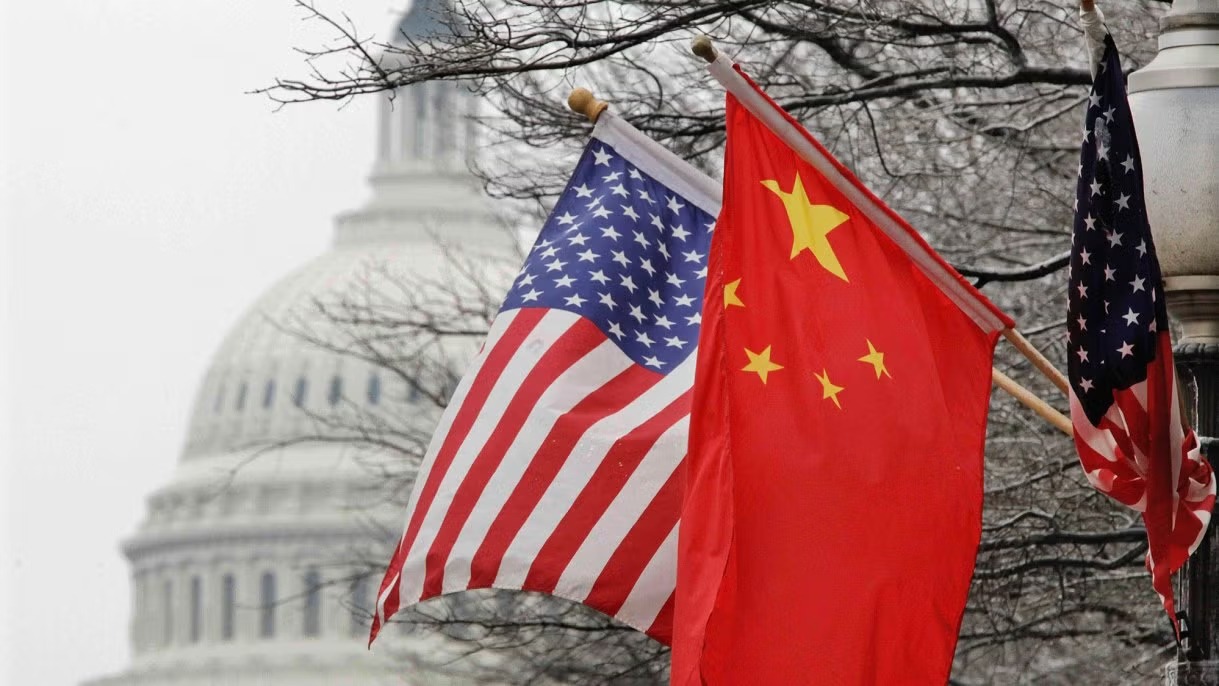Is Trump’s Aggressive Tariff Strategy: Destroying the US Economy, Undermining Hegemony, and Boosting China

The United States, long regarded as the world’s foremost economic power, now finds itself confronting unprecedented headwinds from within its own policy playbook. President Donald Trump’s aggressive tariff strategy, designed to protect domestic industries and rebalance trade deficits, is increasingly proving to be a double-edged sword. While its intended purpose was to foster domestic growth and protect American jobs, mounting evidence suggests that these tariffs are hurting the US economy, heightening recession risks, and undermining American global leadership. Moreover, as the US grapples with these economic setbacks, China stands poised to benefit significantly, potentially accelerating its emergence as the next global leader. This article explores the multifaceted impact of Trump’s tariff policies, examines the channels through which they may precipitate a recession and erode US hegemony, and considers the potential benefits for China. In addition, we address counterarguments that defend the tariffs and discuss their limitations.
Impact on the US Economy
At its core, the tariff strategy is a blunt instrument aimed at protecting domestic manufacturers by making imported goods more expensive. However, this approach has several adverse consequences. American consumers, who traditionally benefit from competitive international prices, now face higher costs on a wide range of goods. As tariffs push up prices on imported consumer products, the purchasing power of US households is diminished. This increase in living costs inevitably leads to a contraction in consumer spending—a key driver of the US economy. Reduced spending means lower revenues for businesses, which can, in turn, force companies to cut back on investments and hiring, further slowing economic growth.
Moreover, tariffs have a cascading effect on supply chains. Many US industries rely on imported raw materials and components to manufacture their products. When tariffs are imposed, the cost of these essential inputs rises, forcing companies to either absorb the additional costs or pass them on to consumers. Either scenario tends to dampen overall economic activity. Industries such as automotive manufacturing, electronics, and machinery are particularly vulnerable because they depend on complex global supply networks. As production costs rise, profit margins shrink, and businesses become less competitive in both domestic and international markets.
The uncertainty generated by these policies further contributes to economic instability. Investors, faced with the prospect of increased costs and a more volatile economic environment, may adopt a more cautious stance. This reduction in investment can lead to slower capital formation and stunted technological innovation, both of which are critical for long-term economic dynamism. In an economy where consumer spending and business investment are the twin engines of growth, the negative repercussions of tariffs can ripple through every sector, putting the overall economic health of the nation at risk.
Heightened Recession Risks
The US economy is inherently cyclical, but the introduction of protectionist tariffs has the potential to trigger a more severe downturn. By raising the cost of imports and disrupting established trade flows, tariffs can initiate a contraction in economic activity that spirals into a recession. A sustained downturn in consumer spending, coupled with declining business investment, can lead to a vicious cycle of reduced production, layoffs, and further decreases in spending.
In this context, the possibility of a recession is not merely theoretical. If the current trajectory continues, the economy could experience a period of prolonged stagnation or even contraction. With higher input costs and squeezed profit margins, companies might be forced to delay expansion plans, reduce workforce numbers, or, in worst-case scenarios, shut down operations altogether. These outcomes would not only diminish economic output but also exacerbate unemployment—a critical factor that feeds into the overall decline in consumer confidence.
Furthermore, tariffs can contribute to global economic uncertainty, which in turn negatively affects the US economy. International trade disputes often lead to retaliatory measures, creating a climate of uncertainty that hampers international cooperation and investment. The erosion of trust among global trading partners can result in reduced foreign direct investment, further straining the US economy. If the international business community perceives the US as an increasingly protectionist and unpredictable market, long-term economic growth prospects may be severely compromised.
Erosion of US Hegemony
Historically, American hegemony has been underpinned by not only its economic might but also its ability to set the rules of global commerce. The imposition of unilateral tariffs signals a retreat from the cooperative international order that has allowed the US to maintain its leadership position. By choosing protectionism over multilateral engagement, the US risks alienating key allies and undermining the global institutions that have long bolstered its influence.
The decline of US hegemony can have far-reaching implications. When a dominant power withdraws from its role as the arbiter of global trade norms, the vacuum that emerges is likely to be filled by emerging powers. In this scenario, China, with its robust manufacturing base and rapidly growing technological prowess, is well positioned to assume a leadership role on the global stage. The erosion of US influence can lead to a restructuring of international power dynamics, where the principles of free trade and open markets are challenged by alternative economic models that prioritize state-led growth and protectionism.
This shift in global leadership is not only symbolic but also practical. A diminished role for the US in setting international trade policies can translate into less favorable terms for American businesses. With the decline of its economic clout, the US may find it increasingly difficult to secure advantageous trade agreements, further accelerating the decline of its global influence. In this context, Trump’s tariff policies could inadvertently hasten the erosion of US hegemony, leaving the nation vulnerable to challenges from rising powers like China.
China’s Advantage and Global Ascendancy
As the US imposes tariffs and retreats into protectionism, China stands to gain in multiple ways. The Chinese government has long pursued a strategy of state-led economic growth, investing heavily in infrastructure, technology, and manufacturing capabilities. With its economy more insulated from the fluctuations of international trade, China is uniquely positioned to capitalize on the instability created by US tariff policies.
By exploiting the gaps left by a retreating US, China can expand its influence in key global markets. Lower tariffs on Chinese goods, relative to those imposed on American imports, can make Chinese products more competitive. This advantage can help China to capture a larger share of global consumer markets, particularly in sectors such as electronics, machinery, and consumer goods. Moreover, as multinational companies seek alternative supply chains to avoid the escalating costs of US tariffs, China’s established industrial networks become increasingly attractive.
In addition to economic gains, the geopolitical implications are significant. China’s growing economic clout can be leveraged to build stronger diplomatic ties and expand its influence in international institutions. As the US withdraws from its role as the global economic leader, China can shape new trade norms and standards that reflect its own interests and priorities. This shift would not only bolster China’s position as the next world leader but also redefine the global order in ways that diminish American influence.
China’s strategic investments in technology and innovation further bolster its prospects. By focusing on high-tech industries and cutting-edge research, China is laying the groundwork for a future where it is not merely a manufacturing powerhouse but also a leader in innovation. This transition is critical for long-term global leadership, as technological superiority is increasingly recognized as a key determinant of economic and military power.
Counterarguments
Despite the significant criticisms leveled against Trump’s tariff strategy, there are those who defend the approach on several grounds. Proponents argue that tariffs are a necessary corrective measure designed to level the playing field for domestic industries that have been disadvantaged by unfair international trade practices. They claim that countries like China have long benefited from subsidies and currency manipulation, which have allowed them to undercut American companies in global markets. From this perspective, tariffs are seen as a tool to compel foreign nations to renegotiate trade deals on more equitable terms.
Supporters also contend that tariffs can stimulate domestic production by protecting nascent industries that might otherwise struggle to compete with established foreign competitors. The argument is that temporary protectionist measures can help develop domestic capabilities, eventually leading to a more robust and self-sufficient industrial base. Moreover, some claim that tariffs generate much-needed revenue for the government, which can be reinvested in critical infrastructure and other public goods.
However, these counterarguments often fail to address the broader and more insidious economic consequences of sustained protectionism. The short-term benefits of tariff-induced domestic production are overshadowed by the long-term costs of reduced international competitiveness, strained supply chains, and the likelihood of retaliatory measures from trade partners. Additionally, while tariffs may generate government revenue, this is offset by the economic drag resulting from reduced consumer spending and lower business investment.
Critics also point out that the notion of using tariffs to protect domestic jobs is increasingly outdated in an interconnected global economy. Modern supply chains are deeply integrated, and isolating one sector rarely leads to net job creation. Instead, the overall effect tends to be a shift in employment rather than a significant increase. Furthermore, the reduction in consumer purchasing power can lead to lower overall economic activity, which in turn affects employment across multiple sectors.
Conclusion
Trump’s aggressive tariff strategy, initially presented as a bold move to protect American industry and rebalance trade deficits, now appears to be inflicting significant collateral damage on the US economy. Rising consumer prices, disrupted supply chains, and declining investor confidence are just a few of the symptoms of a broader malaise that could lead the nation into recession. More importantly, the policies risk undermining the very foundation of US global hegemony by alienating traditional allies and ceding influence to emerging powers.
China, with its robust state-led economic model and long-term strategic investments, is uniquely positioned to benefit from this policy shift. As American industries grapple with increased costs and reduced competitiveness, Chinese products become more attractive in global markets. The potential for China to assume a leadership role on the world stage grows as the US retreats from its role as the global economic arbiter. This new dynamic could eventually herald the end of an era of US dominance, ushering in a multipolar world where power is more diffusely distributed.
Nonetheless, there are compelling counterarguments. Advocates of tariffs maintain that these measures are a necessary response to longstanding unfair trade practices and that temporary protectionism can foster domestic growth. They argue that tariffs not only protect jobs but also generate government revenue that can be reinvested in the economy. Yet, the costs of these policies—disrupted supply chains, diminished consumer spending, and the risk of a global trade war—appear to outweigh any short-term gains.
In summary, while the intention behind Trump’s tariffs may have been to bolster American industry and protect domestic jobs, the reality is far more complex and perilous. The policies are generating significant economic headwinds, increasing the risk of recession, and potentially accelerating a decline in US global influence. At the same time, China stands ready to capitalize on these vulnerabilities, positioning itself as a formidable alternative to American leadership in the international arena. As policymakers and industry leaders navigate this turbulent period, the long-term ramifications of these trade policies will undoubtedly shape the global economic landscape for decades to come.










